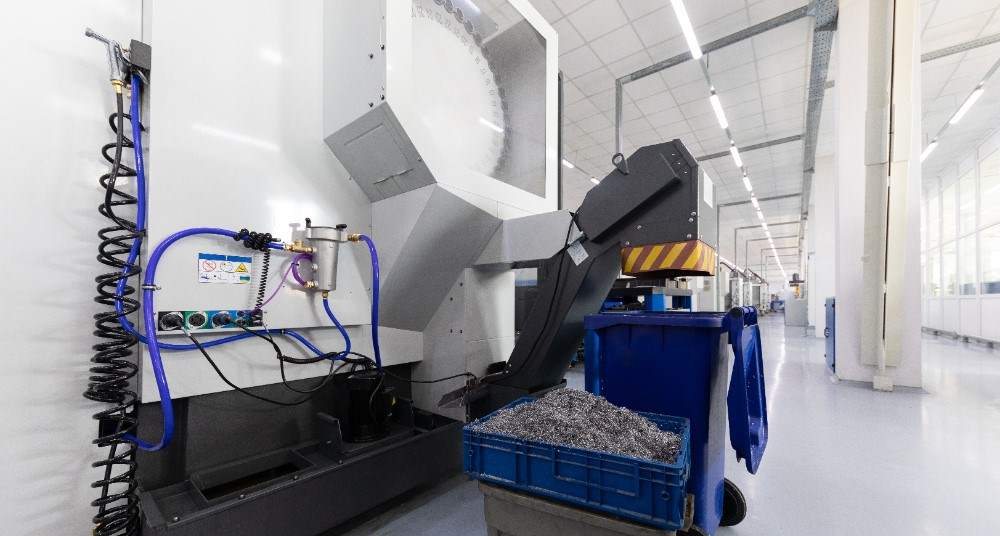Festive Innovation: Nanotechnology for Better Products
With every passing Christmas season, it is clear that innovation powered by nanotechnology promises an exciting future.

Christmas is a time of joy, celebration, and even innovation. Yet, as we deck the halls with twinkling lights and festive decorations, it is easy to overlook the science that makes holiday products better than ever.
Enter nanotechnology—the innovation of the exceedingly small which is making a colossal impact.

Imagine Christmas ornaments that are not only more vibrant but also incredibly durable, or fade resistant tree decorations, or packaging with inbuilt sensors which alert of tampering, or manufactured products made from materials that reduce waste and environmental harm.
Here is the unwrap and reveal on how innovation is transforming manufacturing by creating stronger and greener alternatives through the wonders of nanotechnology.
What is Nanotechnology?
Nanotechnology is the science of manipulating matter at an incredibly small scale, typically between 1 to 100 nanometres. To put that in perspective, a single strand of human hair measures about 80,000 to 100,000 nanometres wide. The advantage of operating at this nanoscale, is that materials can exhibit unique properties not found in their bulk counterparts.
For example, nanomaterials are often much stronger or lighter weight when compared to traditional materials. Adding them to a conventional raw material can impart that strength or other property to form an improved composite. They can also add other desirable properties, such as electrical conductivity or chemical reactivity.

Stronger and More Durable
Nanomaterials are a feedstock which can have an enormous impact on manufacturing.
For example, imagine a glass ornament that doesn’t crack when dropped or more energy-efficient Christmas lights which consume less power and last longer, maintaining their colour for years. Nanotechnology is an innovation which not only extends the lifespan of festive décor but also minimizes waste during the holiday season.
Sustainable Packaging Solutions
Sustainable packaging is becoming increasingly important during the festive season, as Father Christmas delivers so many presents, the environmental impact can be significant.
But here too, nanotechnology can make a difference, as using polymers infused with nanoparticles create barriers that protect contents without sacrificing sustainability. This means that nanomaterials in packaging can enhance strength while reducing weight, allowing for less material to be used in production, lowering both manufacturing and shipping costs.
Additionally, biodegradable options are also possible, with nanotechnology enabling developers to design packages that break down naturally over time, minimizing landfill contributions.
Moreover, smart packaging can incorporate nanosensors to monitor product freshness or tampering, giving consumers gain peace of mind while allowing manufacturers to promote transparency and safety.

One of the most transformative applications of nanotechnology has been the inclusion of nanomaterials in polymer composites. By integrating nanoscale fillers such as carbon nanotubes, graphene, or metal oxide nanoparticles into traditional polymers, manufacturers can enhance the mechanical strength, thermal stability, and electrical conductivity of these materials.
This advancement allows for the creation of lightweight yet robust composite structures that can be moulded into intricate designs. While polymers like these may be too elaborate for crafting into Christmas ornaments, they can be used for other mundane objects which require specific properties.
An elf’s workbench, for example, can build up large amounts of static electricity which can damage or even destroy sensitive and expensive electronics. However, if the bench is made with carbon nanomaterials (or is coated with a paint containing nanomaterials), then electroconductivity can be imparted, reducing the build-up of static. Similar nanotechnology can also be applied to storage shelves, epoxy flooring, or other workspaces that handle electronics, corrosive chemicals, explosives, or other sensitive items.

On a more festive theme, the incorporation of nanomaterials enables new functionalities, such as photoluminescent properties which could be obtained by embedding specific nanoparticles within polymer matrices to develop glowing Christmas decorations. Elsewhere, the incorporation of silver nanoparticles can apply antimicrobial properties to a polymer while also adding aesthetic value with unique optical effects, ideal for Christmas.
This intersection of nanotechnology and polymer engineering exemplifies how modern science is redefining the way Christmas is celebrated. From polymer composites used to make yachts, bicycles, and sports cars, to advanced raw materials used in coatings and packaging—nanotechnology opens doors for ground-breaking applications.
With every passing holiday season, it is clear that innovation powered by nanotechnology promises an exciting future filled with stronger and more sustainable options for celebrating one of the most cherished times of the year.
Photo credit: Wirestock on Freepik, Freepik, Picryl, Freepik, & Usertrmk

